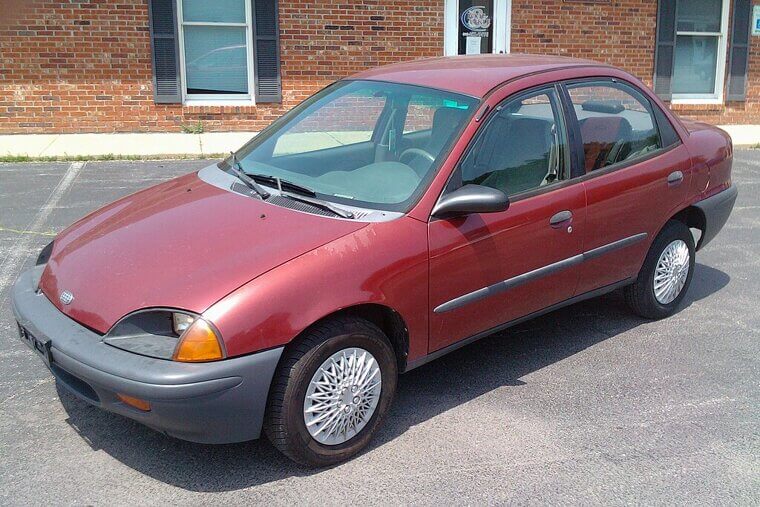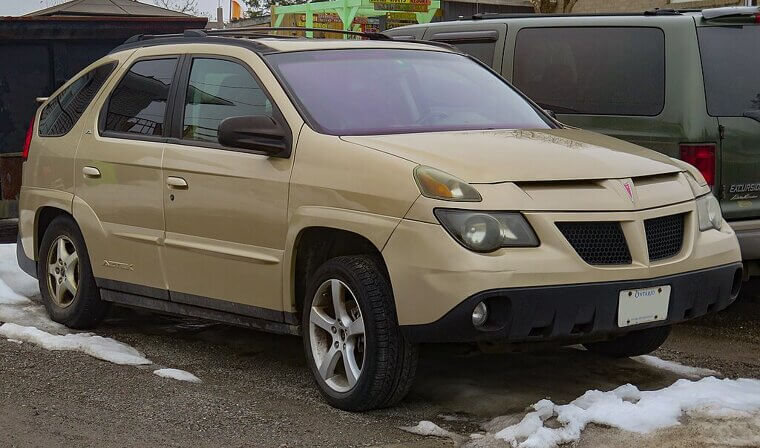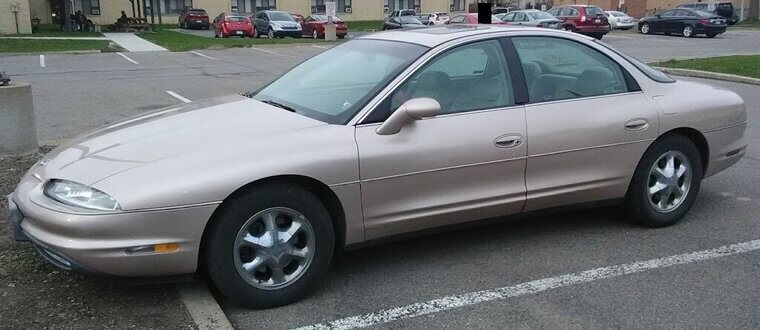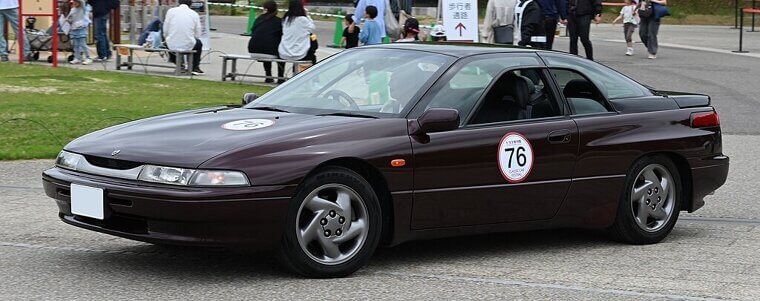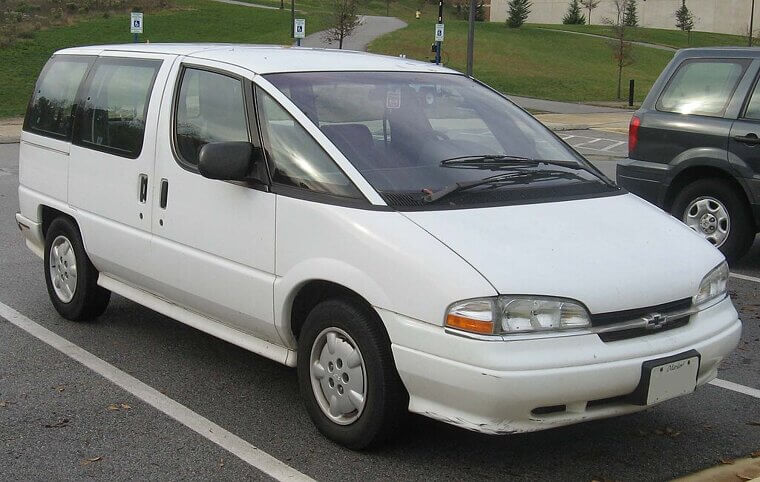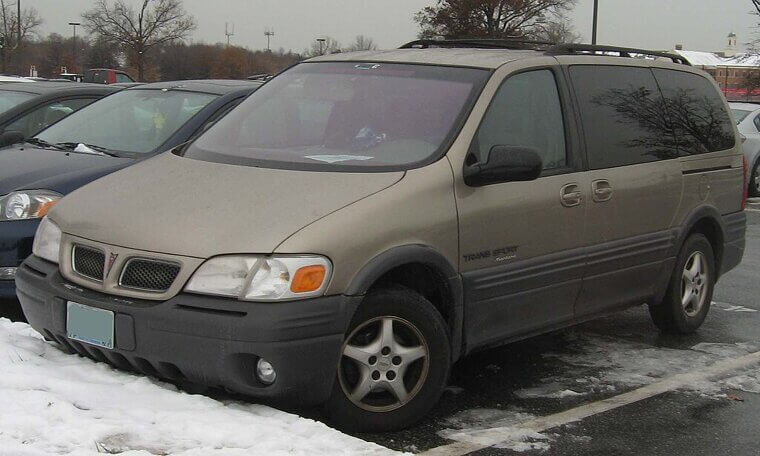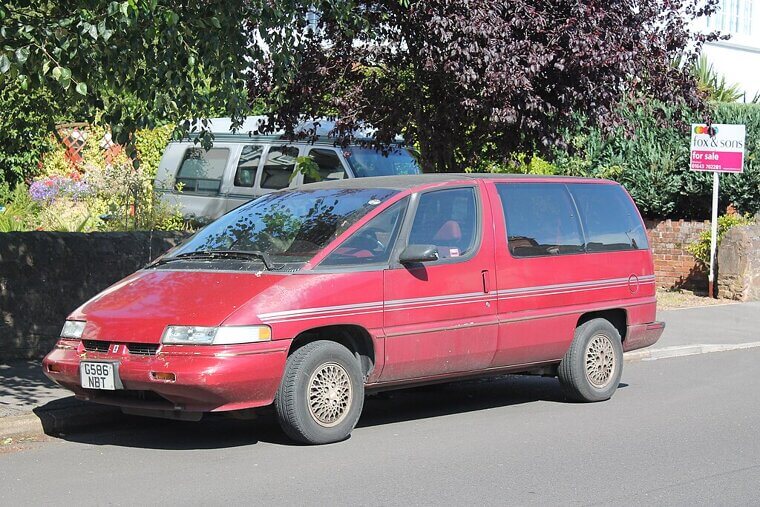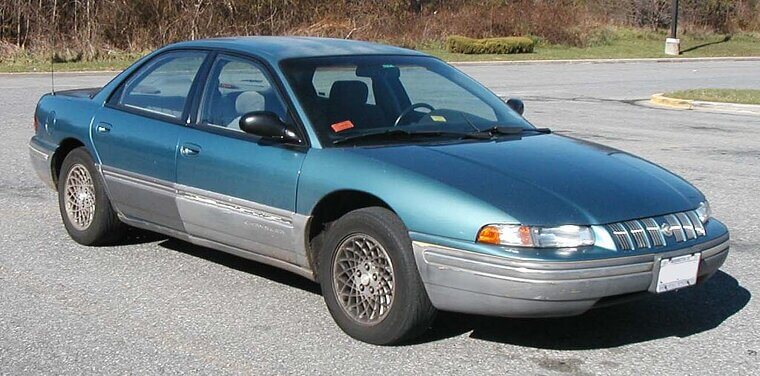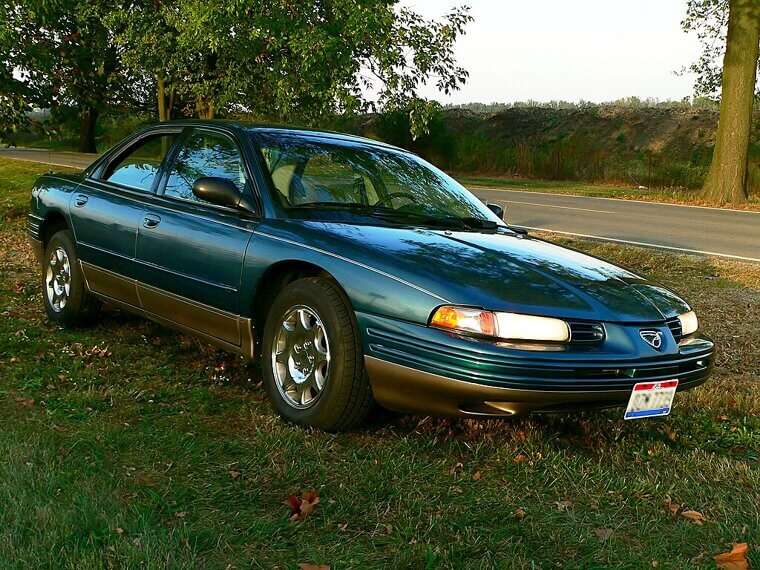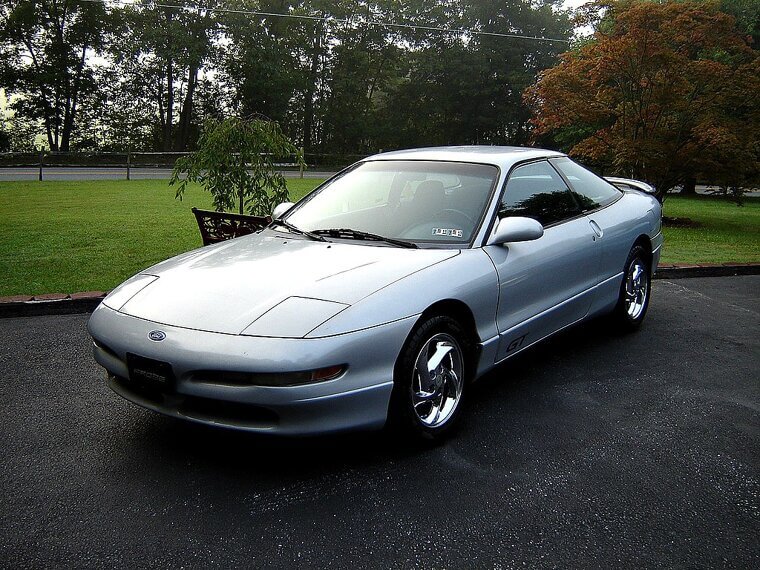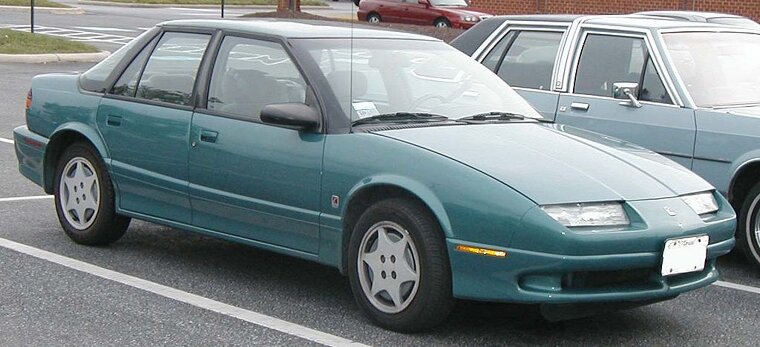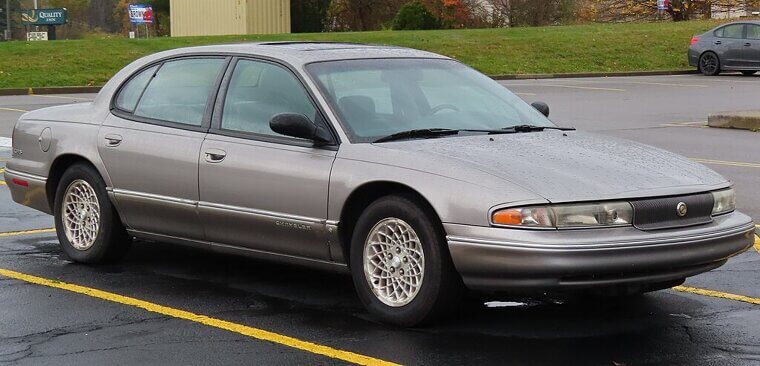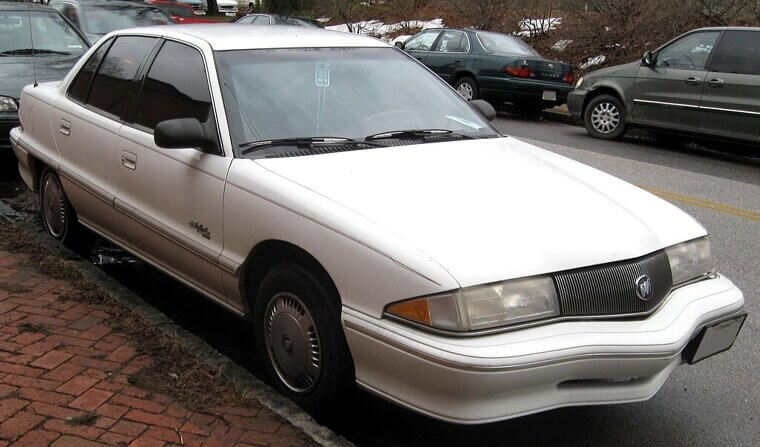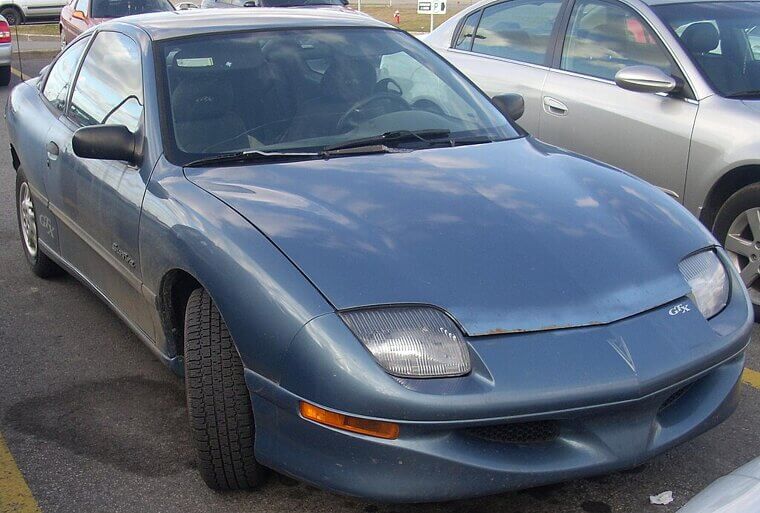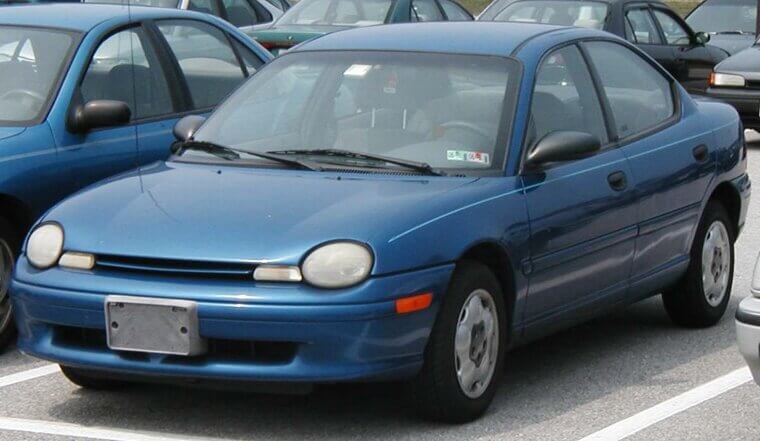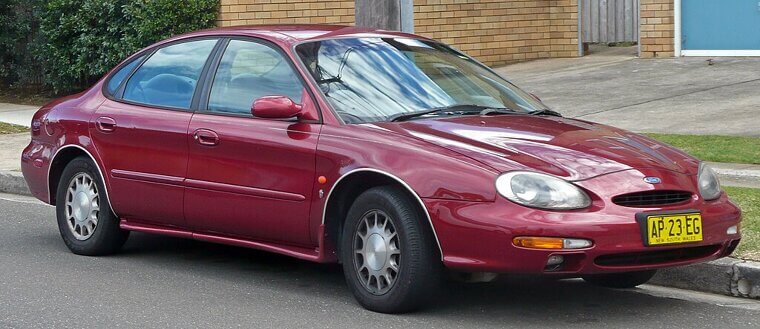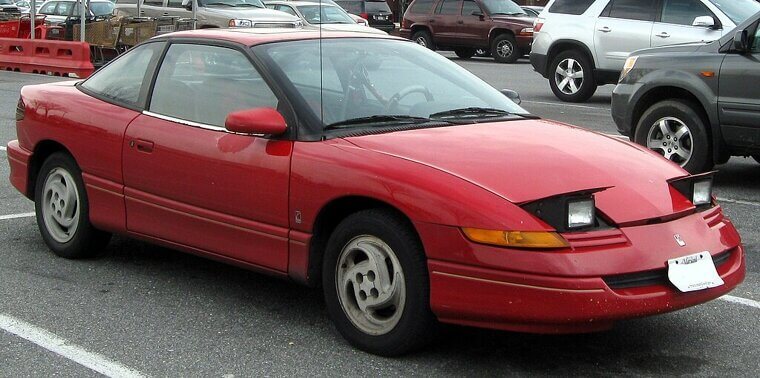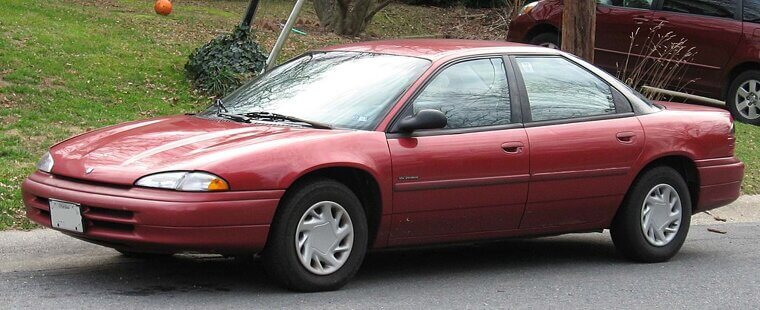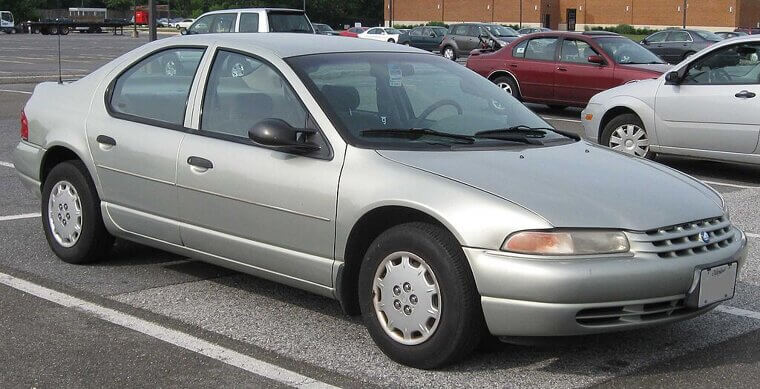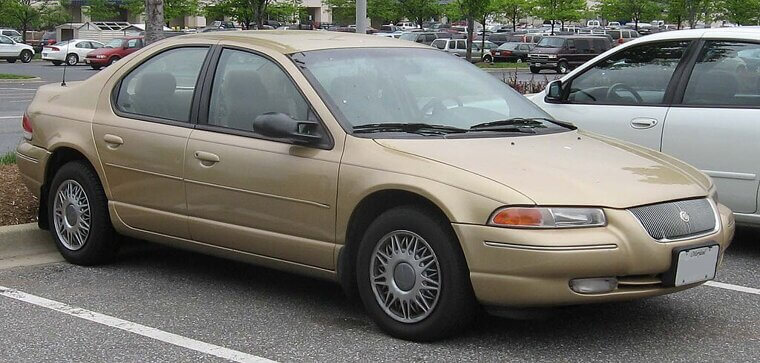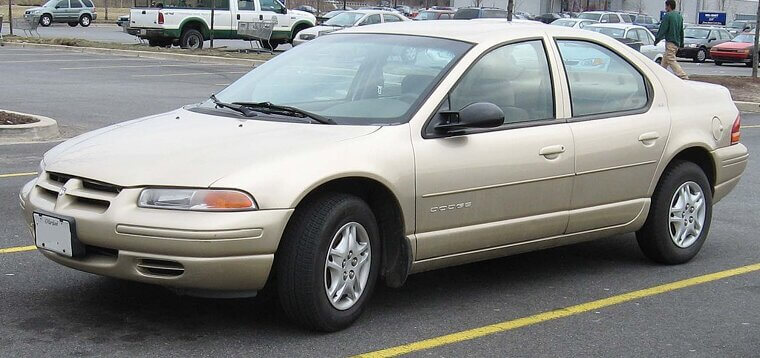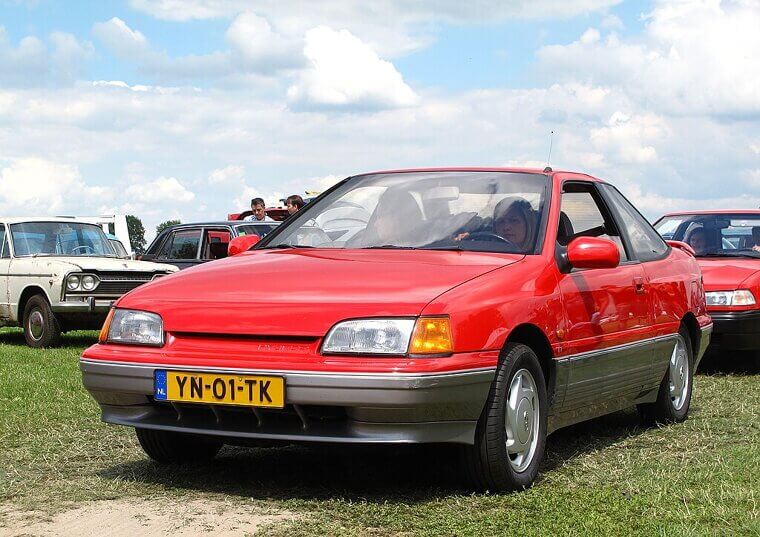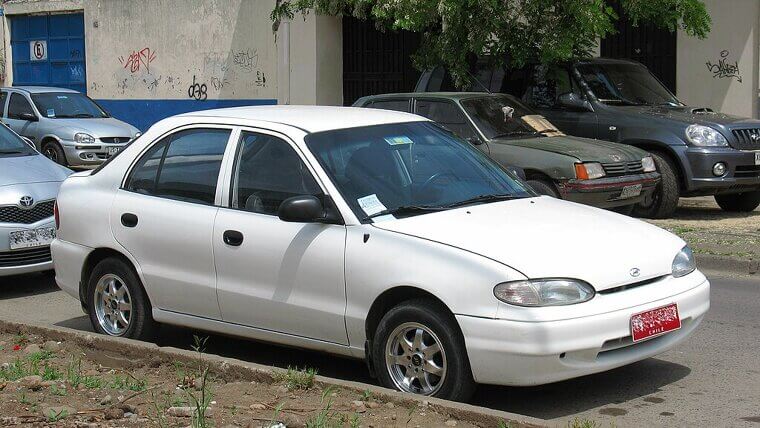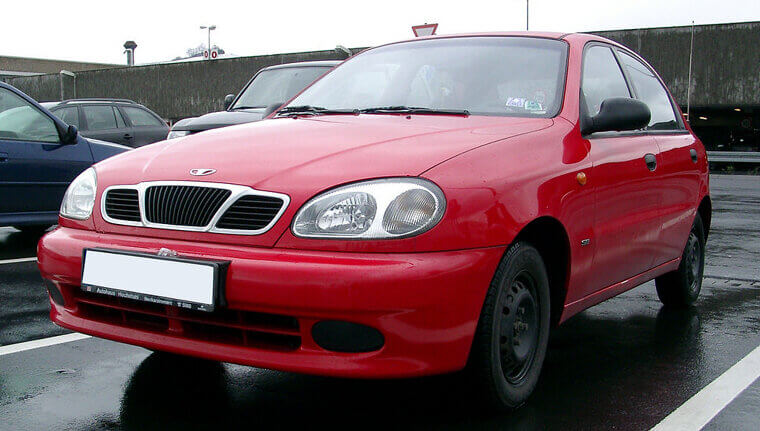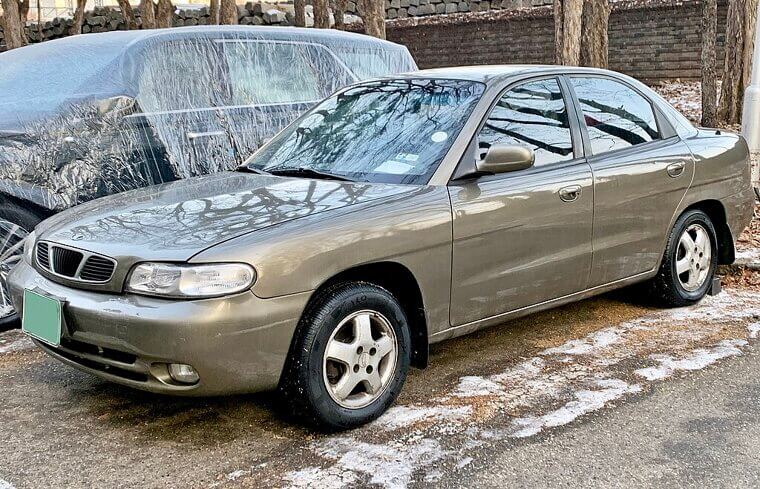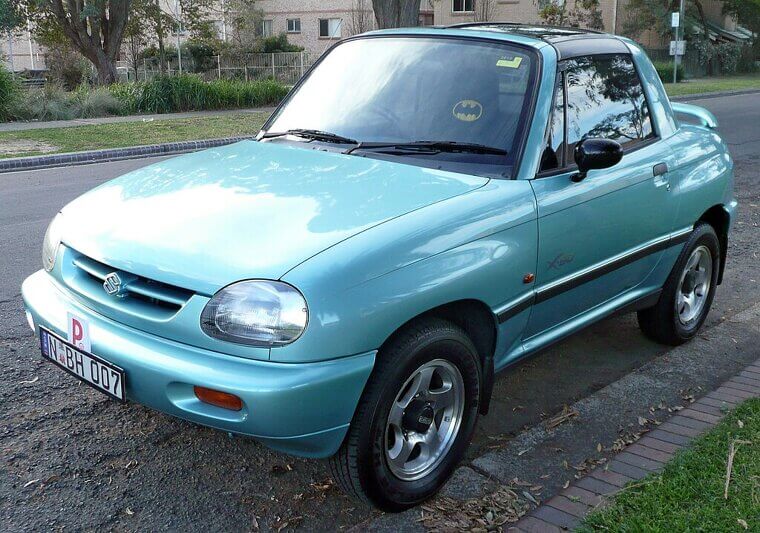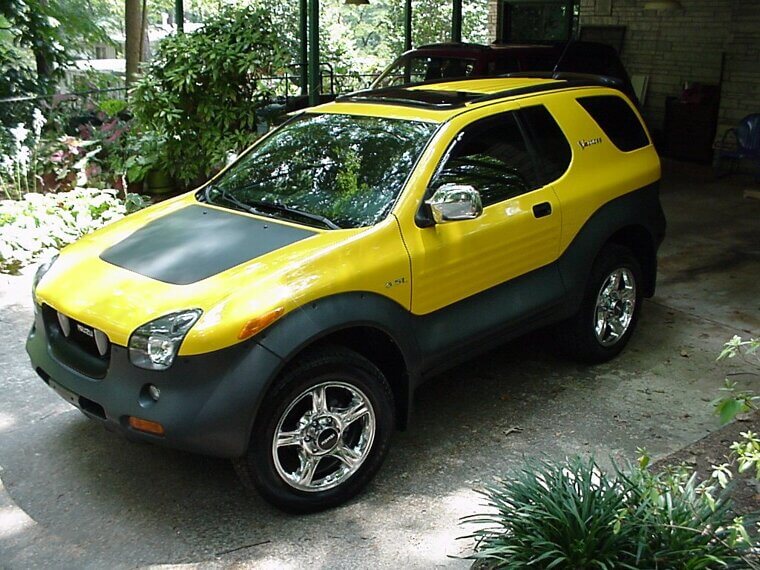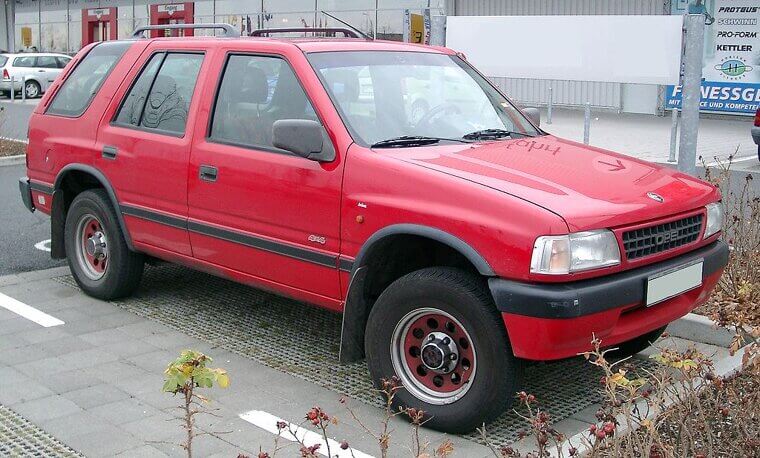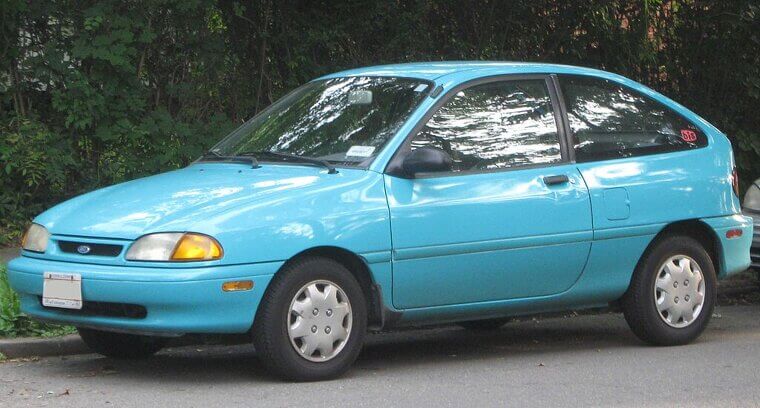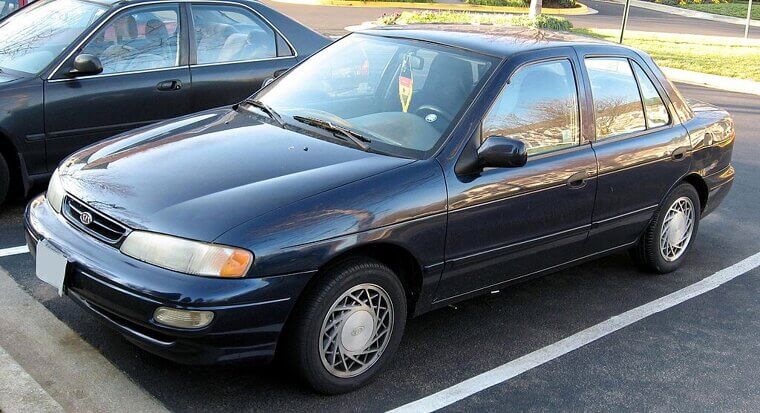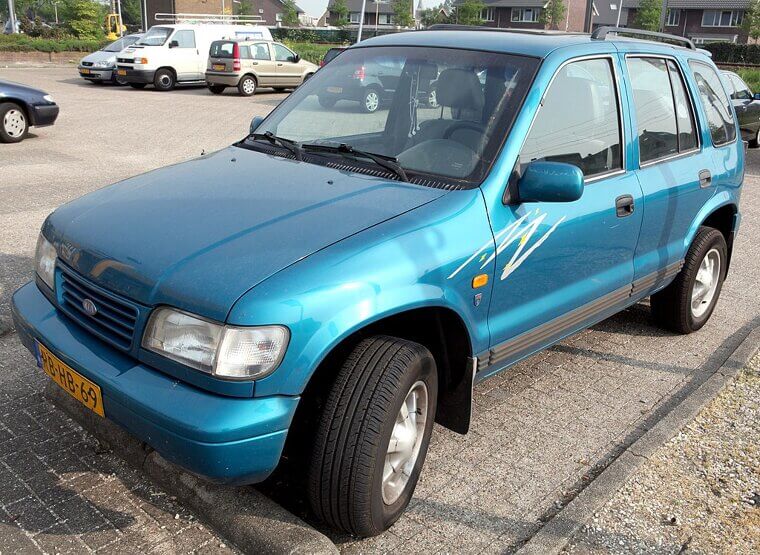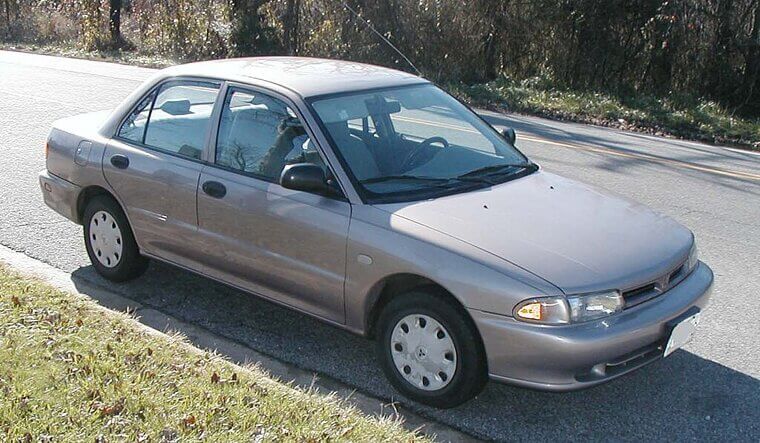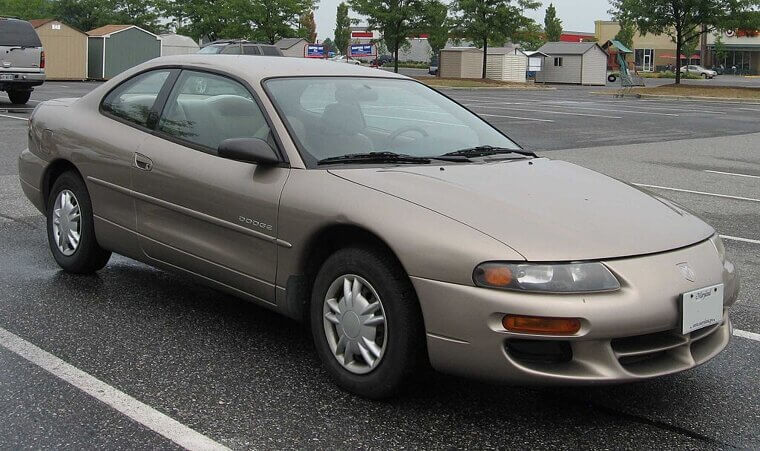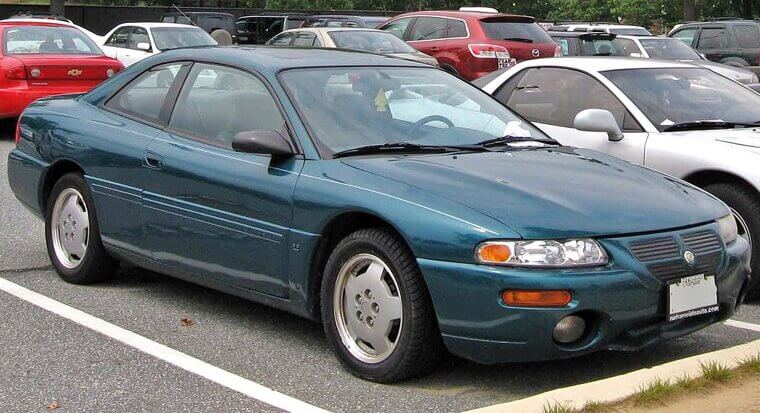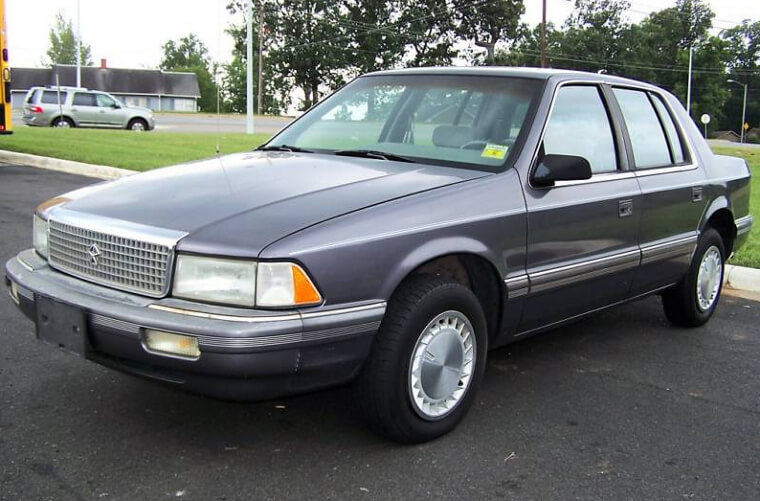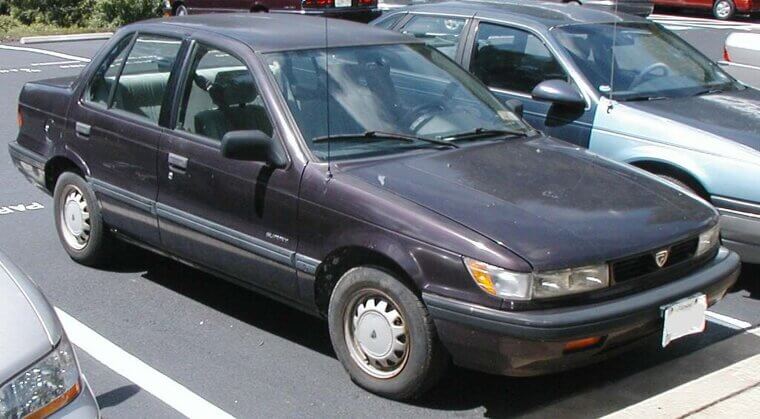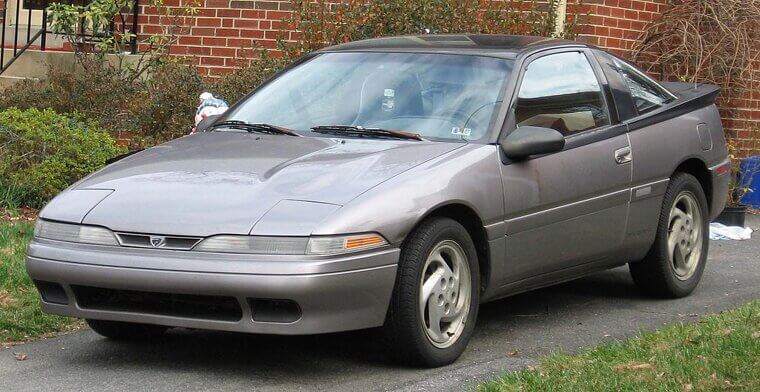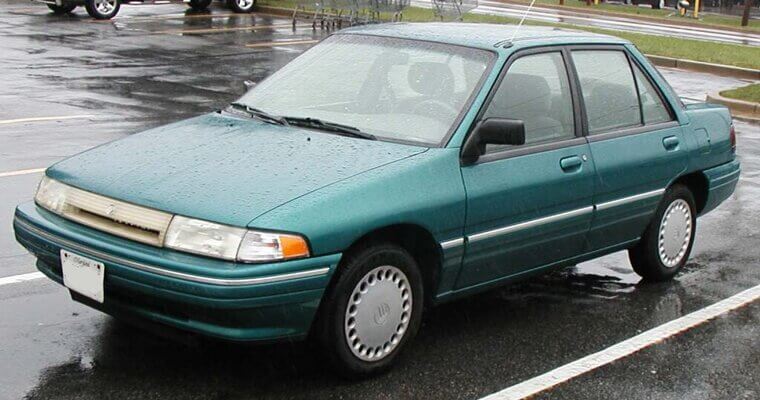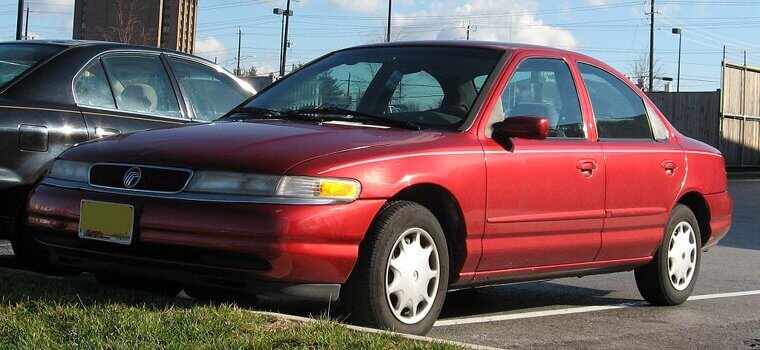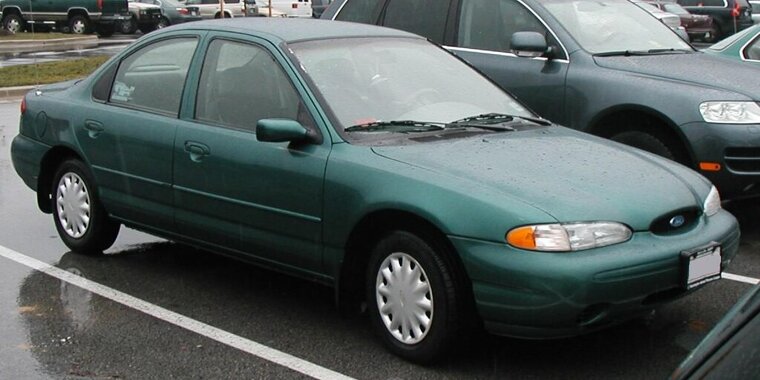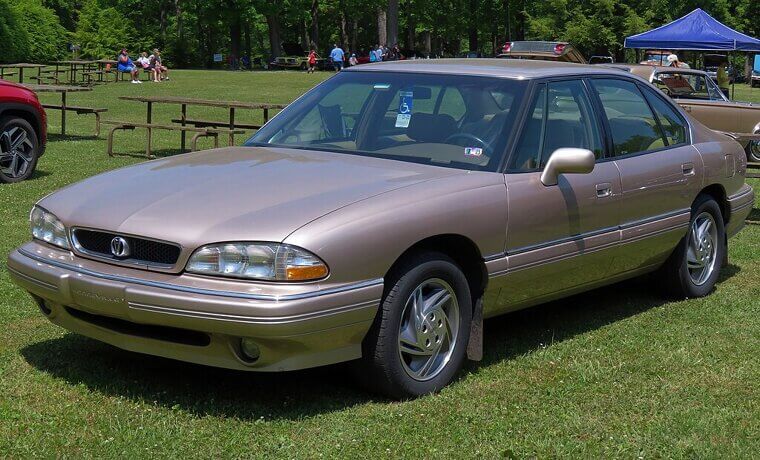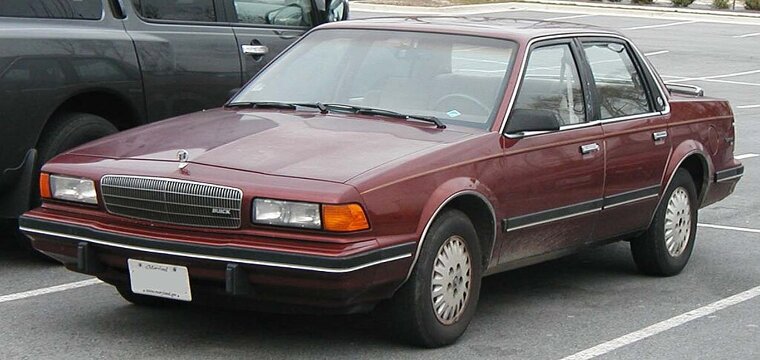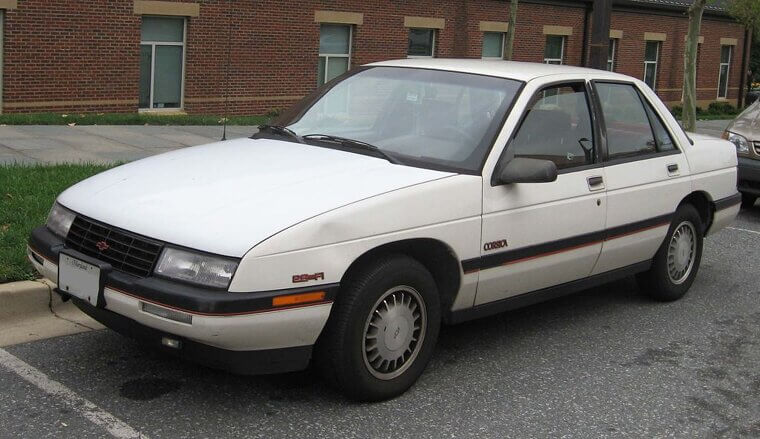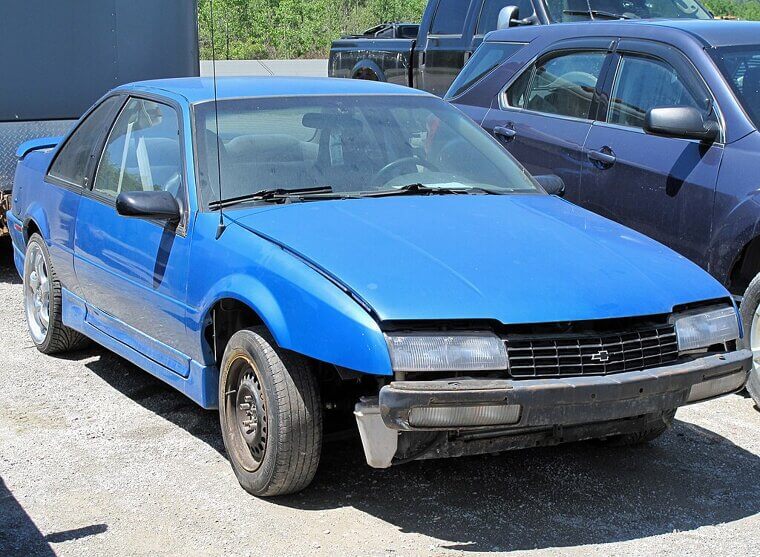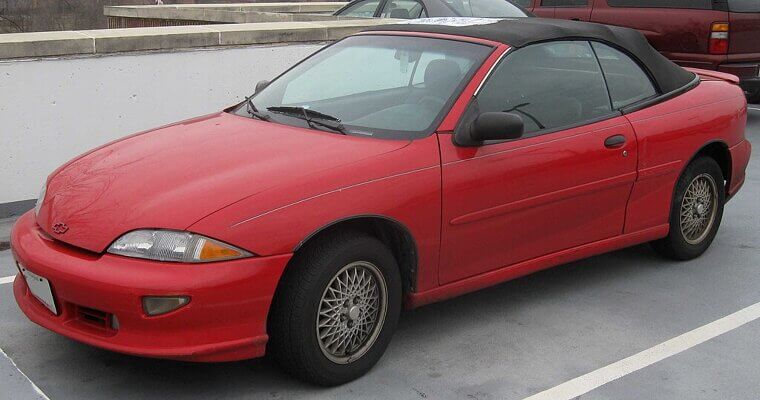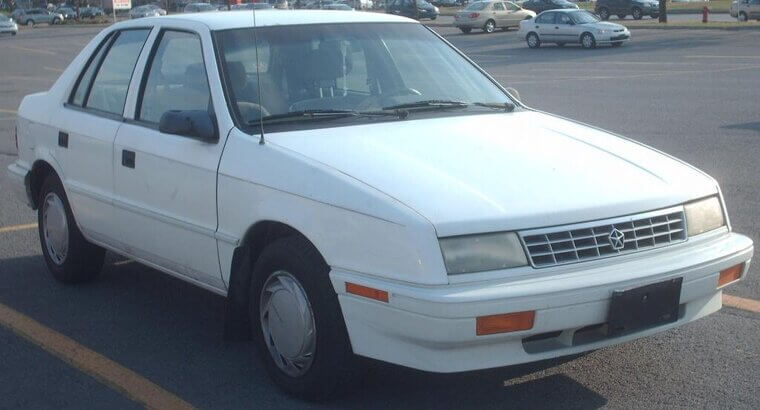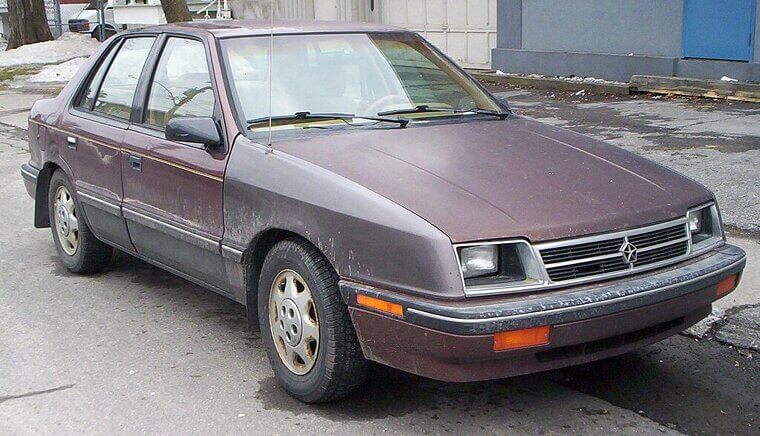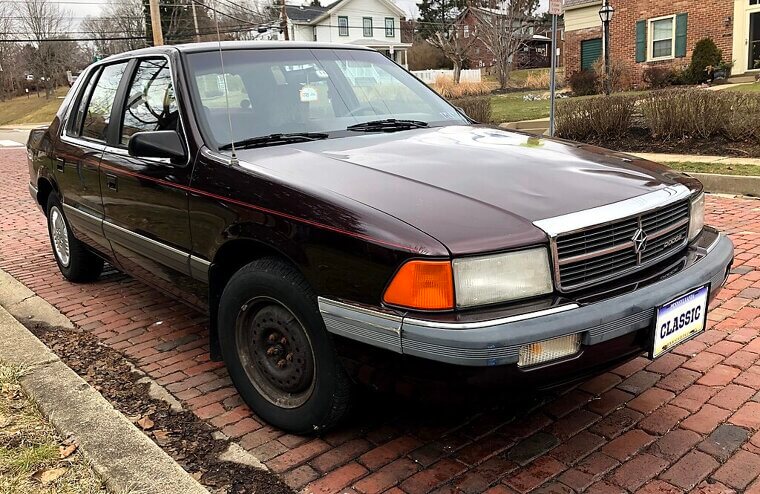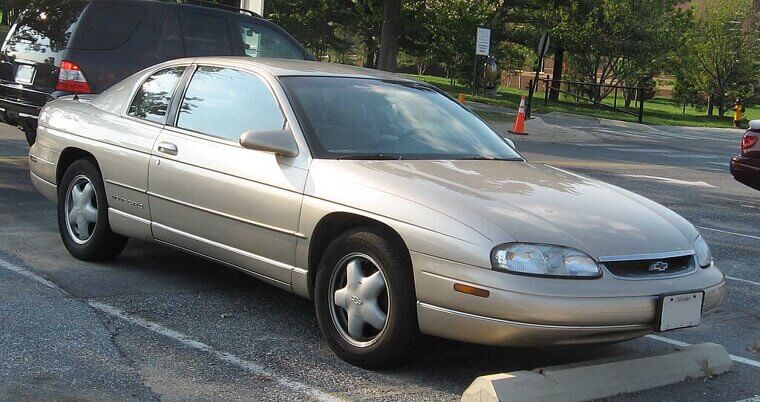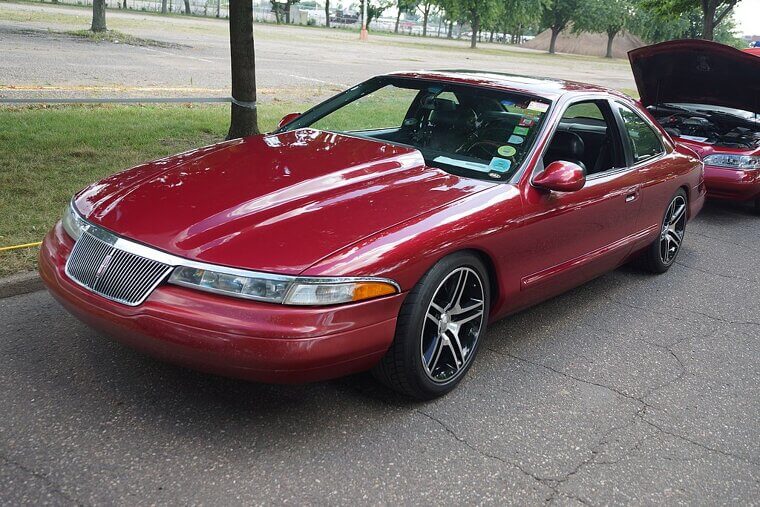Geo Metro (1989–1997)
The Geo Metro was basically four tires, a hamster wheel engine, and a prayer, but it got 50 mpg before hybrids were a thing. You didn’t drive one, you endured it. Today, people love them for the same reason they love ugly dogs: pure loyalty.
Pontiac Aztek (2001–2005, Concept Shown 1999)
The Aztek is what happens when you let a geometry teacher design a midlife crisis. People mocked it endlessly, but fast-forward and it’s bizarrely iconic. Walter White drove this melted Transformer into our hearts, and in a world of beige SUVs, it dares to be weird.
Oldsmobile Aurora (1995–1999)
The Aurora was Oldsmobile’s last-ditch attempt at relevance. Sleek? Maybe. Pretty? Absolutely not! Its face is perpetually squinting into the sun, but the interior whispered “cheap Cadillac,” and it had some genuine luxury vibes. Nobody bought it in droves, but it’s like an underrated time capsule.
Subaru SVX (1991–1996)
Giorgetto Giugiaro, the man behind the DeLorean, gave us the SVX… and his pen must’ve slipped. Those weird half-windows look like a coupe wearing broken bifocals. The rest of the body is oddly bloated, yet somehow futuristic. It was ugly but cool; stuff can be two things.
Chevrolet Lumina APV (1990–1996)
This minivan has a “crafted out of melted plastic by a blindfolded sculptor” aesthetic. Affectionately dubbed the “Dustbuster van,” it was basically a vacuum cleaner with wheels. But families loved its space, weird futuristic vibes, and plastic body panels that never rusted.
Pontiac Trans Sport (1990–1999)
The Trans Sport was GM’s bold statement: “What if a van was also a spaceship?” However, instead of the Millennium Falcon, we got a flying toaster. It looked fragile, but inside was cozy and practical. Parents hated its appearance, but now it’s retro-futurism we can’t quite quit.
Oldsmobile Silhouette (1990–1999)
GM tried to market this as the “Cadillac of minivans.” Which is like calling prune juice the champagne of fruit drinks. The Silhouette was ungainly, pointy, and odd, but it was also comfy, reliable, and aged surprisingly well. It was a guilty pleasure on wheels.
Chrysler Concorde (1993–1997)
Chrysler made a sedan so swoopy it looks like it’s melting on a summer sidewalk. With its cab-forward design, the Concorde felt futuristic at the time, but now it’s the definition of awkward ‘90s optimism. Still, it wasn’t afraid to stand out in a parking lot.
Eagle Vision (1993–1997)
Poor Eagle; the brand everyone forgot even existed. The Vision was basically a Concorde in witness protection - a weirdly elongated bean body with the same awkward grace. It aged into a “corporate rental car,” and yet we still smile when we spot one.
Ford Probe (1993–1997)
The Probe was meant to replace the Mustang. Blasphemy! Instead, we got a car that looked like a squashed egg in need of a chiropractor. The invasive name alone doomed it; nobody wants to say, “I drive a Probe.” It’s got cult-car charm today, though.
Saturn SL (1991–1999)
The SL was a sedan that whispered, “I am invisible,” and its only design statement was, “Please ignore me.” Boxy in the wrong places, rounded in others, it looked like every single designer quit halfway through. Yet, it was cheap, reliable, and everyone knew someone who had one.
Chrysler LHS (1994–1997)
Chrysler’s “luxury” sedan looked like it was stretched on a medieval rack. That long nose, the droopy rear… yikes! It wanted to look sophisticated, then ended up resembling a melted bar of soap in a tuxedo. However, it was plush, comfy, and weirdly futuristic for its time.
Buick Skylark (1992–1998)
The beak-nose Skylark is one of those designs that makes you wonder if it was a dare. The front end looked like it was sniffing the road, perpetually confused. Yet, it was quirky in a way modern Buicks never are, making it so odd it’s kinda lovable.
Pontiac Sunfire (1995–1999)
The Sunfire was the teenage acne of cars: angry, awkward, and overstyled. It had plastic cladding everywhere and looked like it wanted to race but could barely crawl. Still, it sold in droves to first-time buyers because it was cheap, fun-ish, and memorable.
Dodge Neon (1995–1999)
The Neon showed up with that “Hi!” face, and we’ve been debating it ever since. Cute? Creepy? Both? Either way, it was different. The Neon was cheap, cheerful, and way too easy to total in a crash, but that silly smile made it hard not to love.
Ford Taurus (3rd Gen, 1996–1999)
The Taurus went from sensible family sedan to blobfish impersonator. Ford decided every single shape should be an oval, from windows to dashboard vents. Even the airbag cover screamed “egg.” Yet for all its aesthetic crimes, it sold like hotcakes, so you could say it cracked the mold.
Saturn SC (1991–1996)
Saturn billed itself as the “different kind of car company,” and the SC was proof. Those plastic panels never rusted, but they also made it look like a Fisher-Price coupe. Its proportions were cartoonish, its styling awkward, but Saturn buyers loved the honesty.
Dodge Intrepid (1993–1997)
Part of Chrysler’s “cab forward” obsession, the Intrepid was a big jellybean on wheels. Its front end seemed stretched like taffy, its tail squished like clay. It was an ugly duckling, but it had surprisingly good handling, lots of room, and enough weirdness to be unforgettable.
Plymouth Breeze (1996–2000)
Marketed as “the car that breathes,” the Breeze mostly gasped for attention. It was the wallflower sibling to the Cirrus and Stratus; forgettable, frumpy, and plain. But here’s the thing: it was comfortable, had decent space, and today it’s rare enough to spark nostalgia.
Chrysler Cirrus (1995–2000)
The Cirrus was Chrysler’s attempt at upscale chic, but it looked like someone tried to build an Audi out of Play-Doh. Smooth yet lumpy, sleek yet clumsy… it was confused styling at its finest, though it had solid features and a surprisingly nice interior.
Dodge Stratus (1995–2000)
“Cloud cars” sounded dreamy until you actually saw one. The Stratus looked like someone left a sedan in the rain too long: soft, shapeless, soggy. It was the “middle child” nobody remembered between the Breeze and Cirrus, though people still drove them into the ground.
Hyundai Scoupe (1990–1995)
Hyundai’s first stab at a sporty coupe was the Scoupe - yes, pronounced “Scoop.” It looked like a doorstop with a spoiler. Nobody bought it for its looks, but it was cheap and cheerful enough to survive the ‘90s and paved the way for Hyundai’s eventual glow-up.
Hyundai Accent (1995–1999)
The Accent was proof that cars don’t need style when they have sticker-shock prices. It was shaped like a dropped egg - round, bland and uninspiring. But it was affordable, and got you from A to B with minimal fuss. It was mocked, yet many appreciated its honesty.
Daewoo Lanos (1997–2002)
Aesthetically, the Lanos appeared to be designed from stock clip art. Nothing about it stood out; generic grille, jellybean shape, and headlights that looked sleepy. But hey, it was cheap, reliable-ish, and available at shopping malls. Who doesn’t smile at the sheer randomness of seeing one today?
Daewoo Nubira (1997–1999)
The Nubira’s name sounds exotic, but the car could have been assembled from leftover Toyota blueprints. Despite being bland, awkward, and unremarkable, there was charm in its anonymity. Nobody drooled over a Nubira, but plenty drove them without complaint.
Suzuki X-90 (1995–1997)
If a car designer and a toy company had a brain lovechild after too many drinks, you’d get the X-90, a tiny SUV-coupe-thing with T-tops. It looked ridiculous, but it was so goofy it’s become cult cool, and irony has only made it more popular.
Isuzu VehiCROSS (1997–1999 Intro, 1999–2001 Main Run)
The VehiCROSS was the SUV equivalent of a rave outfit: wild, futuristic, a little embarrassing. Its cladding looked like body armor from a bad sci-fi movie, but off-road? It was a beast! It aged into cult status because it dared to be bizarre.
Isuzu Amigo (1989–1994, Revived 1998–2000)
The Amigo was basically a Geo Tracker in a mood ring - quirky, boxy, and eternally awkward. Its face looked like it was always confused, but drivers loved its plucky personality. Hideous? Sure, but it had removable tops and goofy charm.
Ford Aspire (1994–1997)
The Aspire didn’t so much aspire as perspire. Tiny, awkward, and bulbous, it looked like a dropped ice cream with wheels. Ford hoped first-time buyers would love its cheap practicality, but most people laughed at its toy-car vibe. Yet, like a Tamagotchi, its dorky innocence makes us nostalgic.
Kia Sephia (1994–1999)
The Sephia was the definition of beige… except sometimes it was teal. No styling risks, no flair, just a bland sedan that looked embarrassed to exist. However, it was dirt cheap and surprisingly dependable; for broke college students, the Sephia was a trusted, homely sidekick.
Kia Sportage (1993–1999 First Gen)
The boxy, stubby, vaguely Jeep-like Sportage looked like it was designed in Microsoft Paint and screamed “budget adventure,” yet that awkwardness made it endearing. It was scrappy, durable, and oddly charismatic in its rough edges. It’s the ugly ancestor of today’s sleek crossover kings.
Mitsubishi Mirage (1991–1996)
The Mirage had “hatchback inflated with a bicycle pump” chic - its bubble shape wasn’t elegant (it was just puffy) but it was simple, affordable, and hard to kill. You didn’t drive a Mirage for style; you drove it because it started every morning.
Dodge Avenger (1995–1999)
The Avenger wanted to be sporty, but ended up looking like a Chrysler Sebring after a bad haircut. It was aggressive in all the wrong places; plastic-heavy, awkward proportions, and forgettable styling. Still, it was cheap to insure and gave teenagers a “cool-ish” car for prom photos.
Chrysler Sebring Coupe (1995–1999)
Ah, the Sebring Coupe - the car that whispered, “I’m sporty,” but shouted, “I’m rental fleet.” Its rounded body went for sleek, but mostly looked pudgy. Despite looking like a wannabe Camaro with stage fright, it was comfy and a real everyman’s “almost muscle.”
Plymouth Acclaim (1990–1995)
The Acclaim was about as exciting as watching paint dry. Boxy, uninspired, and awkwardly styled,it was nevertheless reliable, cheap, and honest. Nobody bought an Acclaim to look cool. They bought it because it existed - and somehow, that’s lovable.
Eagle Summit (1990–1996)
The Summit was basically a rebadged Mitsubishi Mirage wearing an Eagle badge nobody asked for. Boxy, bland, and awkward, it was like a sedan that got lost in a witness protection program, but it rocked that “background extra in a 90s sitcom” charm.
Eagle Talon (1990–1998)
The Talon was the cooler cousin in the Eagle family, with wild graphics and funky pop-up spoilers. But let’s be real, its design was more of a “Hot Wheels toy” than a timeless sports car. DSM fans swear by them, though. Ugly? Kind of. Cool? Definitely. Like the car version of a tribal tattoo.
Mercury Tracer (1991–1999)
The Tracer was basically a Ford Escort with a fake mustache. Mercury tried to pass it off as “upscale,” but nobody was fooled. Its styling was awkwardly generic, but it was cheap, dependable, and surprisingly fun to drive in hatchback form. It was ugly like a dorky cousin; it grew on you.
Mercury Mystique (1995–2000)
The Mystique was a sedan that tried so hard to be sophisticated that it looped back around to awkward. Weird proportions, bland face, and an interior that felt like it was cosplaying as a European car, it was still affordable and handled well and kind of lovable in its pretension.
Ford Contour (1995–2000)
The Contour was the American Mondeo, which sounds cooler than it looked. Its squished styling was neither sleek nor boxy, just… cramped. It still handled better than most boring sedans of its time, though, and it’s got that underdog vibe - you secretly root for it when you see one still alive.
Pontiac Bonneville (1992–1999)
The Bonneville of the ’90s looked like someone inflated a sedan with a bicycle pump. Oversized, oval-heavy, and weirdly droopy, it screamed “dad car.” Yet, inside it had comfort and V6 power. It was ugly, but unforgettable - every suburban dad had one, so it’s a nostalgic driveway classic.
Buick Century (1990–1996)
The Century looked like a car designed by beige itself. square, utterly uninspired, and visually allergic to excitement, it was the rolling definition of “grandma car.” It still sold like crazy, and now it’s so tied to ’90s suburban life that seeing one feels oddly comforting.
Chevrolet Corsica (1990–1996)
The Corsica was about as stylish as a fax machine. Squared-off body, uninspired lines, and cheap materials, it was fleet fodder at its finest. Even so, millions rolled off the lots, and they were practically indestructible. They were totally ugly, yet Corsicas were everywhere, which makes them an undeniable part of the ’90s landscape.
Chevrolet Beretta (1990–1996)
Despite its name, the Beretta wasn’t exactly a killer in looks. It was boxy yet swoopy in weird proportions, with styling that felt confused. It managed to pull a few people’s triggers with its coupe swagger though - it came in wild trims, and even raced in IMSA.
Chevrolet Cavalier (1995–1999)
With its bland lines, cheap interiors, and a face that looked perpetually surprised, the Cavalier was the most aggressively average car of the ’90s. Despite that, it was everywhere: college campuses, mall parking lots, and high school driveways, so it still managed to be weirdly iconic of its era.
Plymouth Sundance (1990–1994)
The Sundance had all the personality of a loaf of bread. It was squarish, uninspired, and styled like Chrysler forgot the deadline. But it was affordable, reliable enough, and perfect for budget drivers, so while it was ugly, like many Plymouths, its forgettability is kind of what makes it oddly memorable today.
Dodge Shadow (1990–1994)
The Shadow was Chrysler’s attempt at a sporty compact that ultimately ended up looking more like a discount rental car. It had awkward angles and no real identity, but provided some cheap thrills and easy ownership. People have a soft spot for Shadows because they were scrappy little cars that just wouldn’t quit.
Dodge Spirit (1990–1995)
Looking like a box on wheels with a misshapen front end, the Spirit was as generic as car design got. However, here’s the twist: Dodge offered them with turbo engines! Yes, this boring sedan could actually haul. Ugly outside, beastly inside, it was a true sleeper gem hiding under grandma styling.
Chevrolet Monte Carlo (1995–1999)
The Monte Carlo of the ’90s looked like a sun-melted NASCAR vehicle - it was bloated, rounded, and uninspired compared to earlier generations. It still managed to inspire love from fans loved for its racing pedigree and comfy ride, so it had enough swagger to stay iconic in small-town America.
Lincoln Continental (1995–1999)
The ’90s Continental looked like a luxury bar of soap. Smooth, curvy, and oddly featureless, it was Lincoln’s attempt at “modern,” though the result was more “squishy marshmallow.” Still, it had V8 power, plush interiors, and that Lincoln badge. Ugly? No doubt. But people loved the status symbol, and nostalgia makes it shine.

